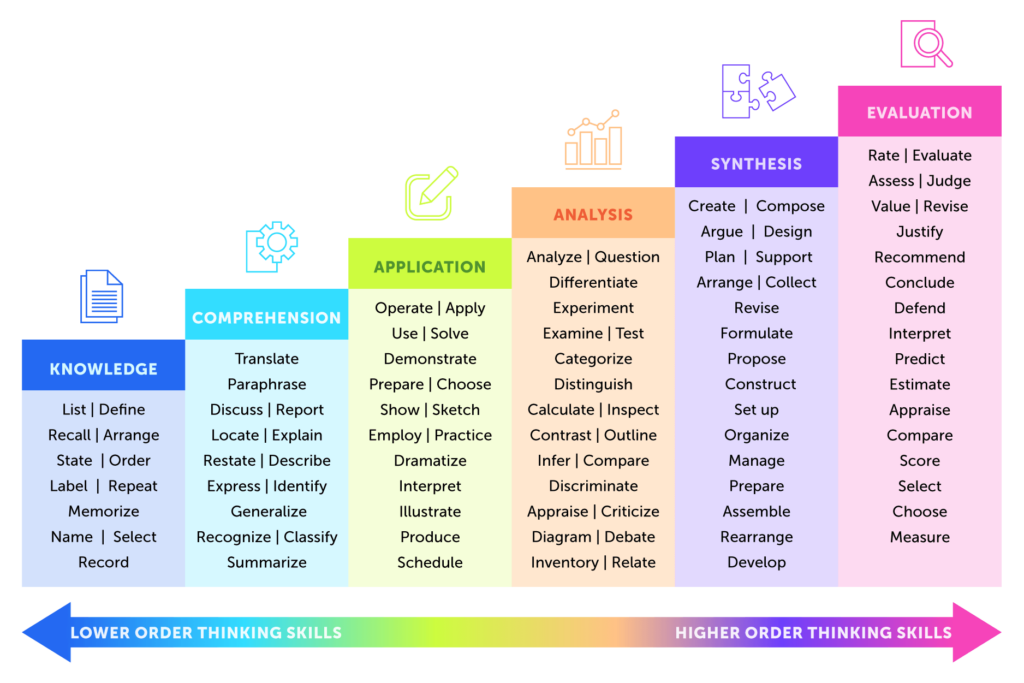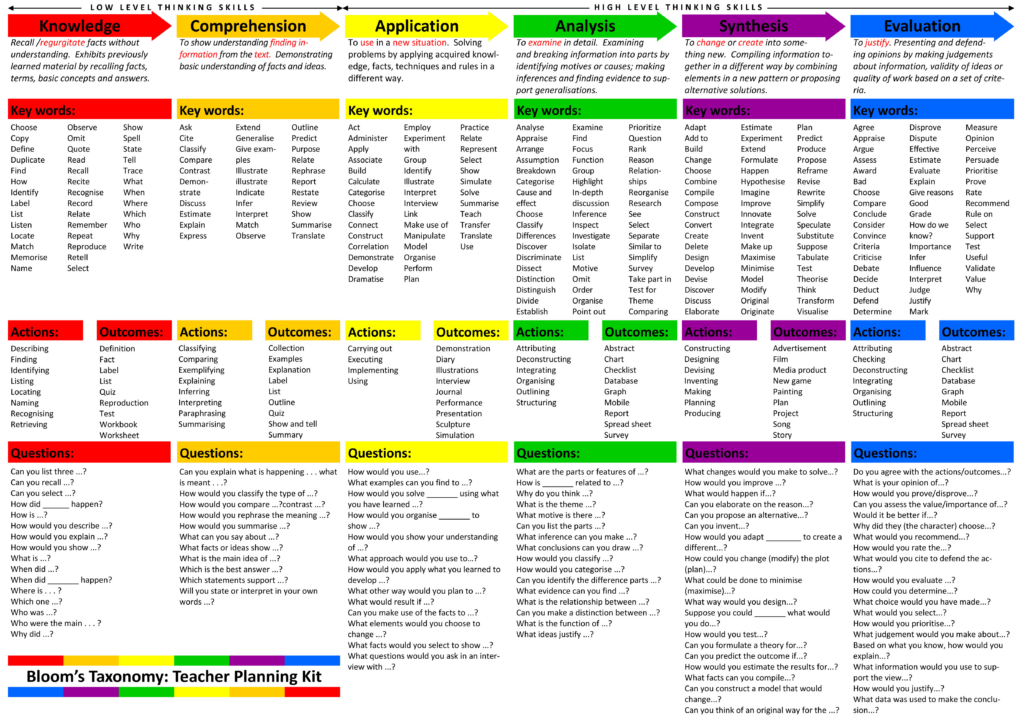Bloom’s Taxonomy is a helpful tool for teachers that breaks down learning into different levels, making it easier to plan lessons and activities that engage students at various stages of understanding. Created by Benjamin Bloom in 1956, and revised in 2001, it offers a roadmap from basic knowledge recall to higher-level thinking skills like analysis and creativity. Let’s dive into how it works and how teachers can use it to make lessons more effective and fun!
The Six Levels of Bloom’s Taxonomy

- Remembering: This is all about recalling information. Think of it like a memory game where students need to remember facts or definitions.
- Activity Idea: Create flashcards or a quiz game where students list the steps of the water cycle or name the parts of a plant.
- Understanding: This is where students show they get what something means. It’s about explaining ideas in their own words or interpreting information.
- Activity Idea: Have students summarize a story in their own words or explain the concept of photosynthesis to a classmate.
- Applying: Here, students use what they’ve learned in new ways. It’s all about practical application, like solving a math problem or conducting a simple experiment.
- Activity Idea: Let students solve real-world math problems or design a simple experiment to test the properties of different materials.
- Analyzing: This level involves breaking down information to see how things are related. It’s like being a detective, looking for clues to understand how different parts fit together.
- Activity Idea: Have students compare two characters from a book or analyze the cause and effect in a historical event.
- Evaluating: At this stage, students make judgments about information, arguments, or methods. It’s like being a critic, deciding what works best and why.
- Activity Idea: Organize a debate on a current event or ask students to write a review of a scientific study.
- Creating: This is the most advanced level, where students use what they’ve learned to create something new. It’s all about innovation and original thought.
- Activity Idea: Encourage students to write their own story, design a science project, or create an art piece that reflects a historical theme.
How Can Teachers Use Bloom’s Taxonomy in the Classroom?

Teachers use Bloom’s Taxonomy to make sure lessons are engaging and cover a range of thinking skills. Here’s how it helps:
- Setting Clear Goals: Teachers start by deciding what they want students to learn and do. For example, a goal might be, “Students will be able to explain the causes of global warming and suggest solutions.” This helps focus the lesson on specific outcomes.
- Creating Fun and Diverse Activities: By thinking about Bloom’s levels, teachers plan activities that keep students engaged. A science lesson, for example, might start with a quick quiz to check what students Remember, move on to a group discussion to ensure they Understand, and finish with a creative project to Apply what they’ve learned.
- Mixing Up Assessments: Assessments can be more than just tests! Teachers use different types to measure different levels of understanding. For example, a pop quiz might check Remembering and Understanding, while a project or presentation could test Applying and Creating skills.
- Personalizing Learning: Not all students learn the same way or at the same pace. Bloom’s Taxonomy helps teachers design activities and questions that cater to different needs. For instance, one group might work on Understanding concepts with a simple worksheet, while another group dives into Creating a model or writing a script.
Some Activity Ideas Based on Bloom’s Taxonomy
- Remembering: Use flashcards, trivia games, or a quick-fire quiz.
- Understanding: Host a story-telling session where students retell a lesson in their own words.
- Applying: Plan a field trip or a hands-on lab activity.
- Analyzing: Create a mystery game where students have to figure out a problem using clues.
- Evaluating: Hold a mock trial or debate to discuss a controversial topic.
- Creating: Organize a class talent show where students present their own projects or performances.
By using Bloom’s Taxonomy, teachers can create a well-rounded, engaging learning experience that helps students grow from simple fact recall to becoming critical thinkers and creative problem-solvers. It’s all about making learning fun and effective!

